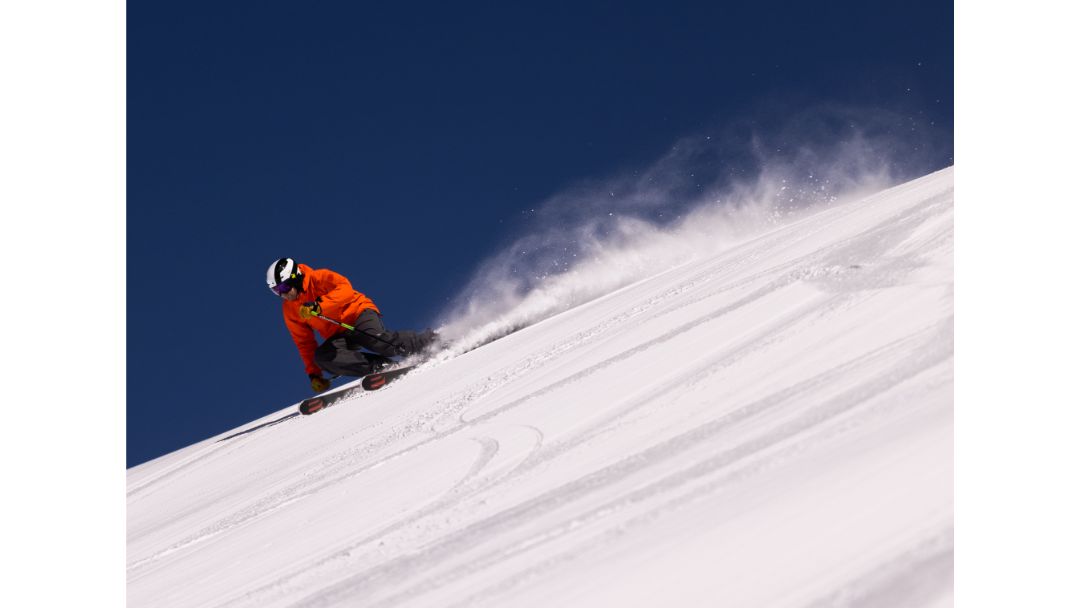Overview
Every mainstream ski brand can trace its roots to a founder, a visionary who nursed a fledgling idea to life. If we’re aware of a brand’s history (a big if), we’ll associate the brand’s formative years with the sepia-toned photos of its first factory.
But new brands still in their tweener years are an abundant breed, whose founders – often two or more bros rather than a single pater familias – are still very much alive and making skis. In recent years Realskiers has profiled three such brands, SkiLogik, Black Crows and Faction. Three years ago we presented a sampling of the Liberty collection for the first time.
Liberty, the brainchild of Dan Chalfant and Jim Satloff, was born 17 years ago from the urge to develop a lighter ski that would reduce fatigue and return more energy to the skier than the relatively dead planks of the day. They were on the leading edge of the Lighter is Better (LIB) movement in consumer goods that has come to dominate the current equipment landscape.
If you’ve ever heard of Liberty, you probably think of it as the “bamboo ski brand.” Actually, according to Chalfant the first material they considered was carbon, which remains elemental to the line to this day. As experienced fly fishermen, the founders knew bamboo possessed many of the same properties as carbon. Their interest piqued, Chalfant and Satloff set about seeing what carbon and bamboo could do together.
The original plan called for Frontside as well as broad-in-the-beam Freeride slats, but the best market opportunity lay in the latter course, so that was the line’s first focus. A lightweight mission is well suited to the women’s market, and Liberty has offered made-for-women models almost since its inception. All Liberty’s women’s models have their own core profile, center of sidecut, mount position and all-Paulownia cores.
Over the years, Liberty’s line has expanded its reach to more categories and skier types. Its popular Origin series, for example, began with a 116mm; Origins now run as fat as 122mm and as skinny as 90mm at the waist.
The intention to make something special for the Frontside skier has been realized with arrival three seasons ago of a new V Series, featuring Vertical Metal Technology (VMT). In its first incarnation, VMT added two vertically inlaid strips of aluminum to its wheelhouse carbon and bamboo construction, creating a series of three skis that were strong, secure and preternaturally easy to ski.
(In an echo of the simultaneous discovery of calculus by Leibnitz and Newton, Liberty unveiled VMT the same season that Blizzard debuted C-Spine and Rossi trotted out Line Control Technology. Is this proof that ideas exist in the ether? Discuss.)
Vertical Metal Technology may prove to be the tipping point that puts Liberty into the big time; it was certainly the focus of the brand’s evolution from an off-trail-only collection to something closer to a full-service provider. Two years ago, Liberty increased the number of vertical aluminum struts in the V92, V82 and V76 from two to three. This enhancement virtually nailed these models to the snow, creating a level of security that rivaled the best the Frontside genre had to offer.
The same year the V-series went to the 3-strut configuration, Liberty extended its two-strut VMT to two all-mountain models, the evolv 90 and evolv 100. Last season’s evolv models used the first generation, two-strut arrangement so they’d be a little livelier and wouldn’t cost as much to produce, which allowed Liberty to price them more attractively. A polyethylene sidewall also boosted rebound energy and made the skis feel more responsive. Viewed from the target skier standpoint, the V-Series models were aimed more for the mature cruiser who spends more time on-trail, while the evolv models skewed younger as they were better adapted to off-trail conditions.
Last year, the evolv series expanded to include an 84mm evolv and a 110, alongside two women’s evolv models, the 84w and 90w. By season’s end, the fate of the V-Series was sealed, its life cut short by a sobering lack of demand for an indie carving ski. But the evolv models would live to ski another day, picking up the fallen banner of a 3-strut VMT and applying it to an all-terrain sidecut and baseline.
We wouldn’t be profiling Liberty in these pages were it not for a decision Liberty took about eight years ago to commit the resources necessary to support specialty retailers. The brand has three other attractive credentials: it’s dedicated to rigorous quality control, as evinced in its tag line, “Details Matter;” it offers a 3-year warranty; and it prices its line aggressively so the customer gets more bang for the buck. Liberty also wisely keeps its attention squarely on making skis and skis only.
One advantage of being small is that ownership, design and manufacture are all in the same hands. We like the fact that Chalfant doesn’t just consider himself a ski maker, but a “brand guardian.” In Chalfant’s words, “Liberty makes skis for committed skiers.” Or, as we might rephrase it, for real skiers.
The 2022 Season
For the coming year, Liberty has laid to rest its technically successful but commercially impaired V-Series, transferring its 3-strut version of VMT to the evolv series of all-terrain skis. As was the case with the dearly departed, the 3-rib VMT makes for a magnificent carving experience, pinning the ski to the snow surface regardless of its consistency.

